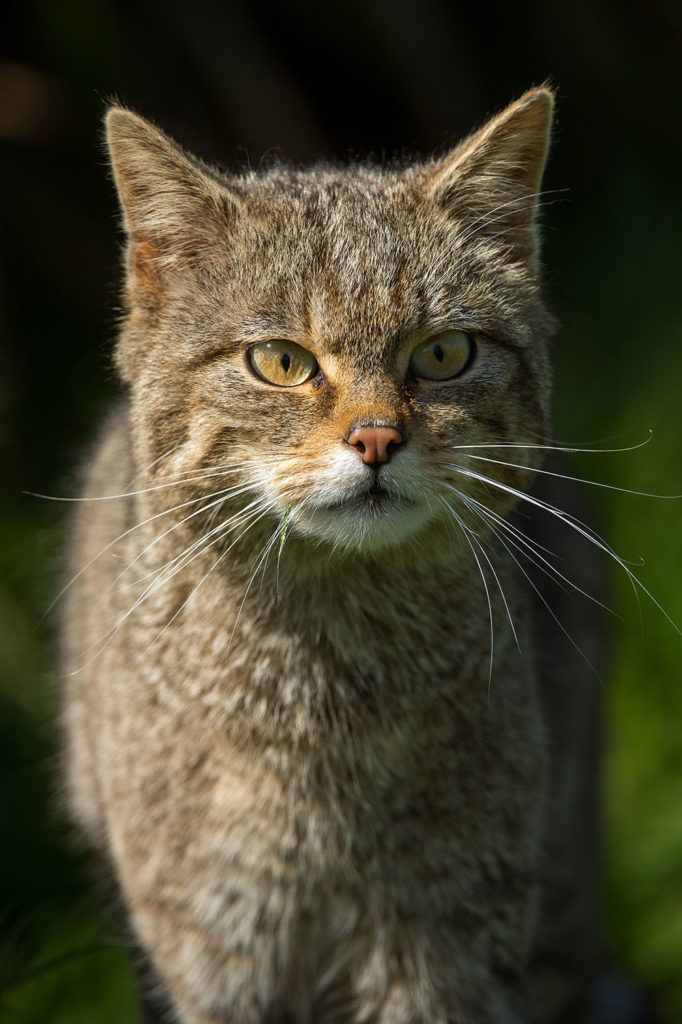How wild are wildcats?
Our wildlife faces many different threats which all come with their particular challenges. Hybridisation between a wild animal – particularly one which has very few individuals left – and a domestic animal can be really problematic to deal with. Are the wildcats in the wild, really wild? Are there any true wildcats left in the UK? If not, does it really matter?
PTES is providing funds to Jo Howard-McCombe to find out. With potentially as few as 100-300 wildcats left in the wild in Scotland, they urgently need our help. We can use morphological features – such as fur pattern – to try and score ‘wildcat-ness’, but now we’re also able to use genetic data to give a much more detailed picture. Jo is looking at genetic data from 108 Scottish cats (4 domestic, 59 wildcats from the UK captive breeding programme and 45 wild-living cats). She has data at over 6,000 genetic locations, but cats – wild and domestic – have about 20,000 genes altogether so getting material about their whole genome (their entire library of genes, so to speak) will give Jo – and us – even clearer information.
Hybridisation and what it means for wildcats
Jo’s previous work showed that the captive breeding population consists of animals that are genetically distinct from domestic cats, and therefore quite likely true wildcats – this is a really positive result for the captive breeding programme. However, in the wild, almost all the wildcats sampled showed some evidence of hybridisation with domestic cats. The levels of hybridisation are so great that this population resembles a ‘hybrid swarm’. A hybrid swarm is the result of frequent interbreeding between species, generating not only first-generation hybrids (i.e. individuals with one parent from each species, wildcat and domestic cat), but also mating between hybrids, and back-crossing of hybrids with parent populations. Individuals can have complicated family trees, with varying levels of domestic cat ancestry. This is now the biggest threat facing the UK wildcat population: hybridisation endangers wildcats’ genetic integrity – urgent conservation is needed to save what makes a wildcat a wildcat!
Looking back 1,500 years at wildcat history
It is unlikely that there are many wildcats left in the wild in Scotland which have no domestic ancestry. Now Jo is trying to work out whether we can use the DNA data we have generated from present-day wildcats to understand the history of the Scottish wildcat population, specifically to understand when hybridisation started, and how quickly it has resulted in a ‘hybrid swarm’. With a good understanding of hybridisation in the past we hope to manage it better into the future, supporting the work of Scottish Wildcat Action and the Saving Wildcats Project re-introducing wildcats back to the wild in Scotland.
Jo has created a model for the last 1,500 years and will test multiple scenarios of wildcat history. When she finds scenarios which reproduce the patterns we see in the present-day wildcats, we can make inferences about past events in Scottish wildcat history. In particular, estimating the time when interbreeding between wildcats and domestic cats began, and the rate of this hybridisation.
Jo aims to model almost 500,000 different scenarios. Luckily powerful computers will do this fairly quickly! Her early results suggest that there was a recent population crash in the Scottish wildcat population, possibly within the last 100 years. It looks as though this followed a high level of gene flow, or interbreeding, from domestic cats of almost 20% per generation. When we better understand the causes of hybridisation in Scotland then we can prevent it happening again in the future.


